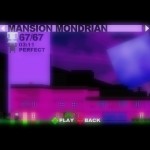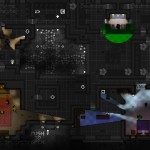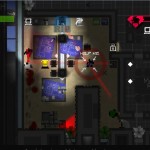When Andy Schatz, founder of Pocketwatch Games, left TKO Studios in 2004 he left with a game design idea that had been rejected by publishers before and the challenge of finding a place in the market to pursue his childhood dream. His first steps were a couple of mildly successful wildlife simulation games, Wildlife Tycoon: Venture Africa and Venture Arctic. However, as his third planned Venture game was not turning out to his liking, the indie designer turned back to an idea not touched in eight years.
That idea is what the gaming world knows as Monaco, the 2010 Independent Game Festival grand prize and Excellence in Design Award winner and runner up in the Fantastic Arcade Spotlight competition. And with the warm critical reception and momentum behind the upcoming PocketWatch project, Schatz expressed some surprise in his positioning with the concept of the game.
“It’s amazing no one’s done it already,” says Schatz of the four person co-op crime-caper.
He had seen crime caper games that have been released, but they have all flopped for poor designed. The developer also said he thinks people didn’t start really thinking about good co-op gameplay until after the first Halo. Even then, it took a while because people didn’t think it would be a viable selling point until the success of Left 4 Dead.
For his personal inspiration for the idea of Monaco, Schatz turned to film for ideas and the tone.
“I love really smart movies,” he said. “I’m not saying snotty, artsy movies which I love, too.”
As examples of those intelligent movies, Schatz points to The Usual Suspects and Momento. Suspects he saw as an example of a crime-thriller movie he loves while Momento served as a thought puzzle.
“The other great thing about those types of movies is they tend to be very light-hearted at the same time very dark,” Schatz said. “It’s a really weird, fun combination of elements.”
The game is very simple to play so Schatz had tried to get the most of the out of the stock characters being used. He pointed to Leverage as an example of parodying the clichés of crime caper stock characters. Monaco likewise uses many such as The Muscle, The Hacker, The Cleaner, The Locksmith, amongst others. The backstory has not been put into the game yet, but it is next task for him.
Giving an idea of what is influencing some of the character design, Schatz told the story behind his version of The Cleaner.
“His backstory is he’s a psychotic male nurse who can heal people but also has chloroform which he uses to knock out guards.”
The character is loosely based on a Ted Maher, whom in 1999 was in convicted of the arson that resulted in the death of billionaire banker Edmond Safra. Safra owned a number of banks in Europe and in America. Safra hired Maher, an former Green Beret, to be one of his nurses in a mansion in Monaco. Maher was believed to have locked the banker in bathroom with another nurse and set the house on fire. Just before cops arrived, the prosecutor in the case contended Maher stabbed himself twice with his own switchblade and claimed thieves had broken in and started the fire. After cops would lock Maher away, Maher escaped by sawing through prison bars. He would be caught in Nice, France 36 hrs later.
The story of Monaco starts in similar fashion to the Maher tale with 4 prisoners breaking out before getting extradited and follows them trying to get new identities within the namesake city. But then in process of doing so, they get caught up in this crime world and end up liking it too much.
But with the popularity of crime-oriented tales and co-op games, wouldn’t it seem a little strange this sort of game would be in such a position to stand-out?
“I think there’s two things,” Schatz started in explaining why he feels the game is unique. “One is that co-op has only recently become a big thing. And the second think I think most people don’t realize or most people don’t think about as notable about the game but I think is the one thing that’s really unlocked this whole area of game design is that you can’t shoot anyone in the game.”
The Cleaner has the ability to knock out guards while The Muscle has C4 that’s semi-offensive when used in certain instances. Aside from those two characters, there is essentially no direct offensive confrontation in the game.
“The game is a game about manipulating your environment to stay away from the guards and stay hidden.”
Anytime anyone has tried to make a game like this, Schatz said, they’ve always fallen back on a gun as a choice to escape situations. Even Hitman, which he believes is a way more fun game to play without the use of any of the available weapons, had fallen into the offering that gun-your-way-out option. As such, he believed including guns would make Monaco feel like everything else, would cause the design issue of worrying about variety of guns and would turned the game down the road of a dual-stick shooter feeling like other games.
“If you take the gun out of the players hands, all of a sudden you have to sort of build an interesting environment because it’s actually no longer the player’s abilities that create interesting gameplay,” Schatz said of his decision not to go the shooter route. “It’s actually the environment and exploring the environment.”
Schatz credited the tile-based nature of the game for ease of development. He said he’s building features on an hourly basis because modular pieces make it a simpler process. For example, on his flight into Austin Schatz programmed a door that closed and locked whenever a security alarms goes off. Hadn’t added into levels for build on display, but has that to toy with now in the design. With that, he could make a room that’s like a trap room. He said it really allows to make figure out what makes the environment fun quickly.
The limited range of view was another byproduct of the tile-based design. Originally, what could be seen would be a whole tile lighting up if it were in the field of vision, an inspired by his desire to make something that felt like a real-time rougelikes. After winning the IGF, he shifted focus on making Monaco visually accessible. To do so, the designer went to vector-based lighting and vision so things that couldn’t be seen were in blueprint with full-lighting for what wasn’t in sight.
In-game computers have done through two redesigns and are likely to go through another iteration. Originally, hacking allowed players to see security cam vision of everything within 20 tile radius. Schatz like the concept of having a little more stationary character that could do that as others went to go steal stuff. Yet it bothered him thinking most people would rather be doing stuff rather than being the one at the computer. Now allows to see all-connected that computer and makes it safe to walk into that field of vision, signified by the green lighting.
But even that has issues, so Schatz has plans for yet another iteration. The problem right now with hacking he said lies the passive ability of The Hacker is to hack a computer and it staying hacked while when others walk away they lose the vision. He found that useless in single-player. As such, he said he is going to prototype an electrical grid connected all things electrical and allow a mini-game where the player controls their worm as it tries to avoid “sparkly” anti-virus programs.
“It’s basically going to be straight Pac-Man,” he said. “You can move your worm to any electronic object in the level to activate it or deactivate it..”
The change will allow for hacking cameras to see it’s sight or steal money from an electric safe, or set telephone to ring as a distraction. Everyone will be able to do it, but The Hacker’s worm would move three times faster. But the player has to be wary not only of anti-virus but if a guard walks into a room he needs to get off computer to safety and if he gets off too early, alarms will sound.
“I think that from a gameplay perspective and an art perspective … that designers want to add more stuff,” Schatz spoke of as a potential pitfall of design. “So it’s always something you have to make sure you don’t more buttons. And so Monaco is one button that you will rarely use actually and everything else is controlled with just the thumbstick.”
It was important to the developer to make as complex a game as possible given those were the only controls. Having to learn to learn all the different buttons is a process Schatz called monstrous. Mastering that skill is something he hopes to achieve and apply to a much more lofty goal of his for the future.
“After this game, I would love to make the first great console RTS,” Schatz said. “No one’s done it. No one’s made a good console RTS. The reason why is because everyone is trying to make Starcraft for a console rather than realizing the reason that people like RTSes is not because they’re all Starcraft-based but because RTSes are fun because it’s real-time chess.”
In breaking down the basics of RTS’s are Schatz called them elements of the idea of real-time chess. Designers run into the problem of trying to shoehorn already “too complicated” mouse-and-keyboard games into a simpler control medium. The first great console RTS will happen when someone takes those chess elements elements and properly fit them to console design. Has to be broken to basic concepts of game design.
“Not video game design, game design,” Schatz clarified. “And hopefully it’ll be me after I make Monaco.”
Schatz currently has opened a call for voice-over talent for the game. Interested parties can find more information at the Pocketwatch Games website or the official Monaco Facebook and Twitter pages.



